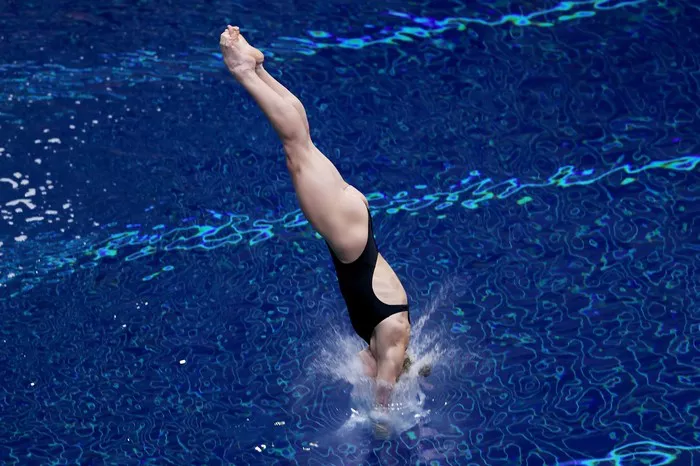Diving is not just a simple act of entering the water; it’s an art, a science, and a skill that requires precision, technique, and finesse. In the world of competitive swimming, mastering the dive is essential for achieving success. Whether it’s in a sprint race or a longer distance event, a well-executed dive can give swimmers a crucial advantage right from the start. In this article, we’ll delve into the intricacies of diving in swimming, exploring its importance, techniques, and the physics behind it.
The Importance of Diving in Swimming
The start of a swimming race sets the tone for the entire event. A powerful dive can propel a swimmer ahead of the competition, allowing them to establish an early lead and maintain momentum throughout the race. In races where fractions of a second can make the difference between victory and defeat, the dive becomes a critical component of a swimmer’s strategy.
Beyond the competitive arena, diving is also an essential skill in recreational swimming and water safety. Knowing how to enter the water efficiently and safely can prevent injuries and accidents, especially in environments like pools, lakes, or the ocean where water depth and conditions vary.
Mastering the Dive: Techniques and Fundamentals
A successful dive requires a combination of proper technique, timing, and body control. Here are the key components of a well-executed dive:
1. Starting Position: Before the dive, the swimmer assumes a crouched position at the edge of the starting block or the poolside. This position minimizes resistance and allows for explosive propulsion.
2. Takeoff: The takeoff phase begins with a quick push-off from the starting block or poolside. The swimmer extends their arms forward and pushes off with their legs, generating forward momentum.
3. Entry Angle: The angle at which the swimmer enters the water is crucial for minimizing resistance and maximizing distance. Ideally, the body should enter the water at a slight downward angle, allowing for a smooth transition from air to water.
4. Streamlining: Upon entry, the swimmer immediately assumes a streamlined position, with arms stretched out in front and legs together. This reduces drag and allows the swimmer to glide efficiently through the water.
5. Underwater Phase: After entering the water, the swimmer executes a series of powerful underwater kicks and dolphin kicks to maintain momentum and accelerate off the wall. This phase is critical for gaining an advantage over competitors.
6. Resurfacing: Once sufficient distance has been covered underwater, the swimmer resurfaces and transitions into their stroke technique, whether it’s freestyle, butterfly, backstroke, or breaststroke.
The Physics Behind Diving
Diving may appear graceful and effortless, but it is governed by the principles of physics, particularly those related to motion, forces, and hydrodynamics. Several key concepts explain the mechanics of diving:
1. Newton’s Laws of Motion:
Newton’s first law states that an object will remain at rest or in uniform motion unless acted upon by an external force. In the context of diving, the swimmer applies force to push off from the starting block, initiating motion. Newton’s second law relates the acceleration of an object to the force applied to it, explaining how the swimmer’s push-off generates forward momentum. Finally, Newton’s third law states that for every action, there is an equal and opposite reaction. As the swimmer pushes against the starting block, the block exerts an equal and opposite force, propelling the swimmer forward.
2. Hydrodynamics:
The study of fluid dynamics plays a significant role in understanding the behavior of swimmers in the water. When a swimmer enters the water, they create waves and disturbances that affect their speed and efficiency. By minimizing resistance through proper body positioning and streamlining, swimmers can move through the water with greater ease.
3. Buoyancy:
Buoyant force, exerted by the water on the swimmer’s body, counteracts the force of gravity, allowing the swimmer to float and maintain position at the surface. By adjusting their body position and angle of entry, swimmers can manipulate buoyancy to their advantage, reducing drag and maximizing speed.
Training and Practice
Like any skill, mastering the dive requires dedicated training and practice. Swimmers work with coaches to refine their technique, improve their strength and flexibility, and enhance their reaction time off the starting block. Dry-land drills, such as plyometrics and strength training, help swimmers develop explosive power for the push-off, while in-water drills focus on refining body position, entry angle, and underwater propulsion.
Video analysis is also a valuable tool for identifying areas for improvement and fine-tuning technique. By reviewing footage of their dives, swimmers can gain insights into their form, timing, and efficiency, allowing them to make targeted adjustments and optimizations.
Safety Considerations While diving can be exhilarating and rewarding, safety should always be a top priority. Swimmers should only attempt dives in designated areas with appropriate water depth and clearance. Diving into shallow water or unknown environments can result in serious injury, including head and spinal cord injuries.
Additionally, swimmers should be mindful of their surroundings and fellow pool users when diving. Collisions and accidents can occur if proper precautions are not taken, so it’s essential to respect pool rules and guidelines at all times.
Conclusion
Diving in swimming is far more than a simple plunge into the water; it’s a skill that requires precision, technique, and an understanding of physics. From the competitive arena to recreational swimming, mastering the dive is essential for success and safety alike. By focusing on proper technique, training diligently, and prioritizing safety, swimmers can unlock the potential of this fundamental aspect of the sport and propel themselves to new heights in the water.

